Digital signage is a very important part of how companies communicate with their customers. Customers now expect to see digital screens almost everywhere they go, and the information they get from them is vital. The most common example of this is within the travel industry. Customers now look to digital signs in airports, train stations and even at bus stops to give them the information they need for their journey. This use of the technology has become very common, but signage is increasingly being used in other industries too.
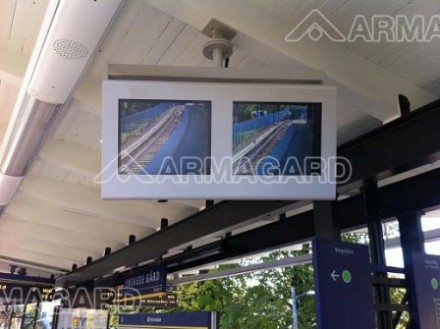
Broadly, there are two types of digital signage; screens for indoor use, and screens for outdoor use. The software in these two systems, and the idea behind them, is exactly the same. It’s the hardware that differs, as screens for outdoor use need to be more hardwearing in order to survive the elements.
Indoor screens are often seen in places such as shopping centres, cinemas and educational centres. They can be wall mounted or free-standing, and come in a variety of sizes. Outdoor screens can be found in numerous types of locations, such as sports grounds, outdoor attractions and on the side of buildings.
What is digital signage used for?
The answer to this question varies greatly. In some circumstances, digital signage is used only to convey customer information; such as film times in a cinema. In other situations, the technology is used to provide advertising. A good example of this is the digital signage often found in the dentist’s waiting room. The screen may be being used to share some useful information, such as appointment times and contact details, but it will also be used to advertise additional services and products.
When screens are used in this way, the idea is to advertise to customers while they are waiting Whether customers are sat waiting for an appointment, or whether they’re waiting in line or on an escalator: companies are taking the opportunity to share information about products with the use of screens. It’s now usual to see digital signage systems in any place where large numbers of people pass through.
What are the benefits of advertising digitally?
The benefits of advertising digitally in this way are huge. Traditional print advertising can be effective in the same situations, but it just can’t compare to the power of digital. The most obvious of the benefits digital signage has over print signage is just how noticeable it is. Whether a screen is being used to show video or changing images, it’s always eye-catching. Customers are much more likely to take notice of moving advertisements than they are of static ones. Digital signage is also able to utilise sound, meaning that this kind of advertising can appeal to two of the five senses, rather than just one.
Another important benefit of digital signage over print is that it’s a lot more efficient. Rather than just one static image taking up valuable advertising space, a digital screen can showcase different types of advert at different times of day. This has huge potential for targeted advertising, and means that every inch of space can be utilised. Once a digital signage system has been installed, it’s also far easier to update and change information than it is with print adverts; just change the file on the software, and the screen will update instantly.
The cost of digital signage
When a company or organisation chooses to install digital signage, they are looking at a significant investment. Digital signage technology is designed to be hardwearing and high quality, which means that it doesn’t come cheaply. However, there are a variety of methods for achieving digital signage these days, as hardware can range from dedicated outdoor displays, networked LED video walls, or cost effective outdoor LCD enclosures that can be used with commercial hardware.
Its understandable that companies that have spent a large sum of money on a new communications system will be keen to be able to demonstrate return on investment straight away. Of course, it’s important to be able to track how well a new system is working, as well as what can be done to improve it’s success. However, when it comes to digital signage, there are many benefits to be had that are difficult to measure in terms of return on investment.
What other benefits should be taken into account?
A high quality digital signage system will be an asset to your company for many years to come. Screens can last for a long time, and over the years they can mean a significant reduction in the cost of printing and replacing traditional adverts. It can also mean that you’re able to react quickly and positively to all kinds of situations.

This ability to communicate quickly and effectively can have a huge impact in the way customers perceive your company. Being able to share information in this way means that you’re able to apologise for things such as delays or long queues and prevent your customers from getting frustrated.
A brilliant example of this is at a theme park. Often, theme park visitors spent a large part of their day waiting in queues. In peak times these queues can be extremely long, especially for the most popular rides. In situations like these it’s important for the theme park to consider the needs of their customers, and what they can do as a company to make the necessary queuing a more pleasant experience. If there is digital signage on hand during the queuing area, customers can be kept up to date with expected waiting times. They can also be entertained with park details and suggestions for where to go next. Remember; well informed customers are likely to be happy and forgiving customers!
Company image is also seriously improved with a digital signage system. Investing in digital signage is a quick and simple way to vastly improve the way your premises are perceived by customers. Large screens featuring quality content look extremely professional, and make sure that visitors to your company leave impressed.
Similarly, the awareness of your company can be boosted, there are few better ways to create one than by using digital signage technology. In this case, outdoor systems are particularly helpful, as they can spread awareness of your products and services to everyone who passes by. Digital signage can be an unobtrusive, professional and hugely effective way to get people talking about what you do, and to turn those people into customers.
Why isn’t return on investment the number one priority?
It’s always important for companies to know what they’re doing that’s working, and what they’re doing that isn’t. Digital signage is no exception to this. The reason we don’t think digital signage objectives isn’t all about measuring return on investment is because many of the benefits they give aren’t easy to measure. Typical return on investment reports look to measure direct sales, and digital signage does a lot more than just that.
Digital signage systems have a huge impact on customer service and communications. In turn, these factors will rapidly boost the satisfaction levels of your customers. Though customer happiness undoubtedly has a huge effect on spending and return custom, it’s not always easy to measure.
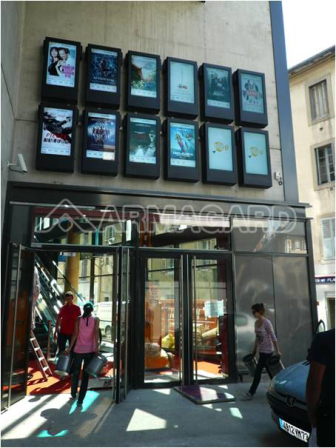
Another way digital signage provides a real boost to companies is in spreading awareness, but this isn’t straight forward to measure either. It’s not always as simple as a customer seeing information on a screen and going straight to buy the product. Often, the sale itself can come months after the customer saw the information, and tracking the sale back to a particular advert on a particular screen is near impossible.
How should this be reflected in your digital signage objectives?
When it comes to setting objectives for what you want to gain from your digital signage system, try and think outside simple return on investment. If you focus on other areas, such as improving your customer service and communications, you may find it a lot easier to implement a successful strategy.
Think about what you are primarily trying to achieve. Maybe it’s to keep customers informed about deals and offers they may be interested in. Maybe you want to be able to ensure efficient appointments and changeovers. Or maybe you just want to keep your customers entertained while they wait to be served. Whatever your aim, consider how your digital signage can be best used to meet it and put together a strategy for doing so.
When digital signage is used well, it creates happy, well-informed customers that will spend money with your company and return again and again. There’s no doubt that return custom at this level will have a hugely positive impact on your bottom line, but it’s not always straightforward to map the return on investment of this.
Think of your digital signage as a tool to communicate with, not to sell with, and you’ll find that your return on investment will take care of itself.
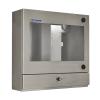
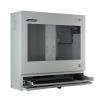
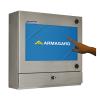
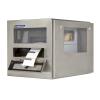
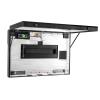
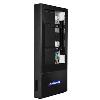
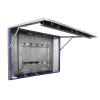
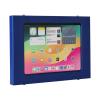
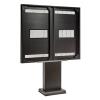
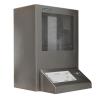






Comments are closed.